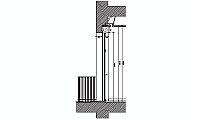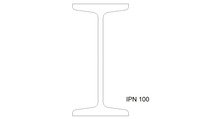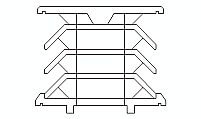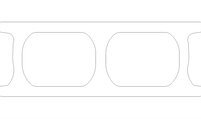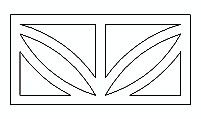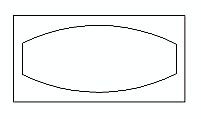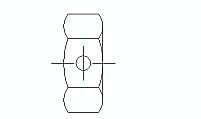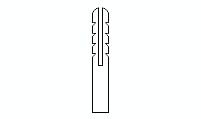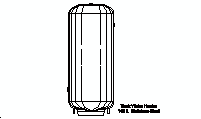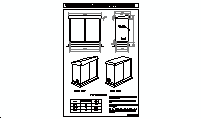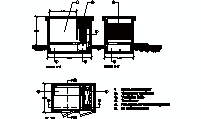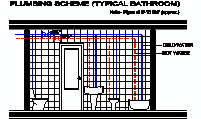CAD Blocks categories
 3D models
3D models home furniture
home furniture sanitary ware - bathrooms
sanitary ware - bathrooms professional equipment
professional equipment doors and windows
doors and windows people and animals
people and animals plants and trees
plants and trees vehicles - transports
vehicles - transports architectural details
architectural details mechanical - electrical
mechanical - electrical urban planning - civil works
urban planning - civil works safety health construction
safety health construction accessible design
accessible design drawing sheet
drawing sheet signals
signals construction machinery
construction machinery accessories and objects
accessories and objects maps and street maps
maps and street maps
Curved Roofing Sheet Free CAD Block
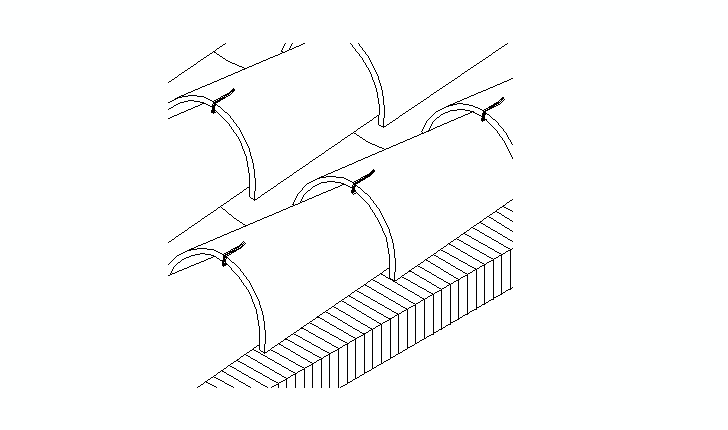
size: 11 kb
category: architectural details
related categories:
description: perspective view of a roofing system with curved tiles attached to a curved roofing sheet using individual hooks for secure placement and support.
file extension: .dwg CAD - AutoCAD software
Comprehensive Guide to Curved Roofing Sheets and Tiles
Description of Curved Roofing Sheets with Tiles
The system displayed features a curved roofing sheet designed for structural support and covered with individual curved tiles. The tiles are secured to the sheet using specialized hooks that ensure stability and prevent displacement. This setup is often used in traditional and modern roofing designs where durability and aesthetics are prioritized. The curved sheet provides a strong base for the tiles, while the hooks offer precise and secure placement for each tile.
Similar roofing systems are commonly employed in Mediterranean countries, such as Spain, Italy, and Greece, where curved tiles are a staple of traditional architecture. These tiles are also referred to as barrel tiles or Spanish tiles in some contexts. Their combination with curved structural sheets enhances both their performance and longevity in diverse climates.
Dimensions of Curved Roofing Sheets and Tiles
The most common dimensions for curved tiles include lengths of 17 to 20 inches (430 to 500 mm) and widths of 6 to 7 inches (150 to 180 mm). The curvature radius typically ranges from 2.5 to 3 inches (60 to 75 mm), providing the distinctive barrel shape. For curved roofing sheets, lengths range from 8 to 12 feet (2.4 to 3.6 meters), and they are often manufactured with a thickness of 0.04 to 0.08 inches (1 to 2 mm) depending on the structural requirements.
This roofing system requires precision in the dimensions of both the curved sheet and the tiles to ensure proper alignment and fit. The hooks are designed to accommodate these specific measurements, contributing to the roof's overall integrity and appearance.
Construction Systems and Applications
- What materials are used for curved roofing sheets?
- Curved sheets are typically made from galvanized steel, aluminum, or fiberglass for strength and durability.
- How are the tiles attached?
- The tiles are secured with metal or plastic hooks that grip both the tile and the sheet firmly.
- Can this system be used on steep roofs?
- Yes, this system is highly adaptable and can be used on slopes ranging from 20 to 45 degrees.
- What are the benefits of using curved tiles?
- Curved tiles provide excellent drainage, aesthetic appeal, and protection from harsh weather conditions.
- Can curved sheets and tiles be combined with other roofing materials?
- Yes, they can be integrated with flat tiles or panels for hybrid roofing designs.
Advantages of Using Curved Roofing Systems
Curved roofing systems provide exceptional water drainage and resistance to heavy rain and snow. The combination of curved sheets and tiles ensures structural stability and reduces the risk of water infiltration. Additionally, the hooks add a layer of security, preventing tiles from shifting or falling under extreme conditions.
In comparison to flat roofing systems, curved designs enhance the aesthetic appeal of the building, making them ideal for residential and historical architecture. The thermal performance of the tiles, coupled with the structural efficiency of the sheets, makes this system a sustainable choice for modern construction.
History and Global Use of Curved Tiles
Curved tiles, commonly known as barrel tiles, have their origins in Mediterranean and Middle Eastern architecture, where they were traditionally made from clay. Over time, they have been adapted for use in modern construction with materials such as ceramic and concrete. Their timeless design is both functional and visually appealing.
While widely used in Europe, curved tiles are less common in the United States. Instead, asphalt shingles or standing seam metal panels are preferred for residential and commercial buildings. In other parts of the world, such as Latin America and Asia, curved tiles are a popular choice for traditional and contemporary structures.



